The Mexican holiday of Día de los Muertos (or Day of the Dead) has origins in pre-Columbian Mexico, but some of its rituals have roots in the Spanish church as well, so it is observed in some form throughout much of Latin America. The holiday honors the remembrance of departed loved ones, mourning their absence while simultaneously celebrating their lives and the continuing spirit that they leave with us. With our concert, the Sinfonietta captures both sorrow and joy with an aural and visual spectacle worthy of those who have passed before.
COMPOSERS
Osvaldo Golijov, Preludio and Balada 1 from Ainadamar
 Composer Osvaldo Golijov was born to a Jewish family in La Plata, Argentina in 1960. His mother was a piano teacher, his father, a physician. He was raised surrounded by classical, Jewish liturgical and klezmer music, and the nuevo tango of Ástor Piazzolla. He studied piano and composition at the local conservatory before moving first to Israel, and then the United States to continue his studies. His music is a reflection of these multiple influences, rendered as a cohesive whole. Golijov was the Chicago Symphony Orchestra’s Composer in Residence during its 2009-10 Season. Ainadamer, his first opera, premiered in 2003. The title is Arabic for “Fountain of Tears”, and the story, by noted playwright David Henry Hwang, is based on the life and death of Spanish poet and playwright Federico García Lorca, who was murdered during the Spanish Civil war. His works and the circumstances of his life have inspired countless artists in the years since.
Composer Osvaldo Golijov was born to a Jewish family in La Plata, Argentina in 1960. His mother was a piano teacher, his father, a physician. He was raised surrounded by classical, Jewish liturgical and klezmer music, and the nuevo tango of Ástor Piazzolla. He studied piano and composition at the local conservatory before moving first to Israel, and then the United States to continue his studies. His music is a reflection of these multiple influences, rendered as a cohesive whole. Golijov was the Chicago Symphony Orchestra’s Composer in Residence during its 2009-10 Season. Ainadamer, his first opera, premiered in 2003. The title is Arabic for “Fountain of Tears”, and the story, by noted playwright David Henry Hwang, is based on the life and death of Spanish poet and playwright Federico García Lorca, who was murdered during the Spanish Civil war. His works and the circumstances of his life have inspired countless artists in the years since.
Based as it is on events in Spain, Ainadamer is filled with Iberian musical influences, notably flamenco, but the score also illuminates the Arabic and Jewish predecessors of that familiar sound. The short Preludio is filled with ominous sounding percussive effects, some of them electronically generated sounds of gurgling water and galloping hoof beats, segueing directly into the Balada. This introduction, for orchestra, chorus and soprano, will be performed at Día de los Muertos.
Osvaldo Golijov’s website includes a detailed biography, photos, and a complete list of works.
This video is the opening minutes of a recent performance by the Opera Parallèle in San Francisco.
Wolfgang Amadeus Mozart, Selections from Requiem
 A Requiem is a mass for the dead. As such, it is also meant to honor their life. Its origins date back to the early Catholic Church. Historically, the Spanish subjugated the indigenous population of what is now known as Latin America largely with the justification of spreading this very same church. It is not a coincidence that Día de los Muertos occupies the same spot on the calendar as the Catholic All Souls’ Day. Indigenous customs and beliefs were often disguised as Catholic rituals to hide them in plain sight from their conquerors.
A Requiem is a mass for the dead. As such, it is also meant to honor their life. Its origins date back to the early Catholic Church. Historically, the Spanish subjugated the indigenous population of what is now known as Latin America largely with the justification of spreading this very same church. It is not a coincidence that Día de los Muertos occupies the same spot on the calendar as the Catholic All Souls’ Day. Indigenous customs and beliefs were often disguised as Catholic rituals to hide them in plain sight from their conquerors.
Classical music has its share of intrigue, betrayal and people behaving badly. In other words, it’s a lot like the rest of human existence. But even by these standards, Mozart’s Requiem stands apart. The Requiem was Mozart’s final work. In fact, he died before its completion. The ailing composer was approached by the emissary of an anonymous count who wanted a mass to commemorate his dead wife. The story, though, is that the count meant to pass off the composition has his own. Mozart, feverish and near death himself, came to believe he was writing his own Requiem, and that is pretty much what happened. After Mozart died, his widow Constanze, not wanting to lose the commission, secretly had it completed by another composer in order to get the final payment that was offered her husband. The finished manuscript was delivered bearing Mozart’s forged signature. However, the count’s alleged scheme to claim authorship when a public performance of the Requiem was given before the Count presented his.
The Guardian’s Classical music blog has a nice piece on this enduring mystery and the music that came from it.
The video contains a brief but powerful excerpt.
Astor Piazzolla, Las Cuatro Estaciones Porteñas (The Four Seasons of Buenos Aires)
 The passing of the seasons have long been used as a metaphor for the cycle of life. Who hasn’t heard the phrase “autumn years” used to describe people deep into their lives? There’s no indication that the Argentine composer and originator of nuevo tango Astor Piazzolla had this in mind when writing Las Cuatro Estaciones Porteñas, but there is that passionate and edge-of-tragedy feel that permeates tango, so who knows? Piazzolla has written pieces that directly address death and remembrance; in fact, both Adios Nonino (commemorating his father) and Oblivion have been performed at previous Sinfonietta Día de los Muertos concerts.
The passing of the seasons have long been used as a metaphor for the cycle of life. Who hasn’t heard the phrase “autumn years” used to describe people deep into their lives? There’s no indication that the Argentine composer and originator of nuevo tango Astor Piazzolla had this in mind when writing Las Cuatro Estaciones Porteñas, but there is that passionate and edge-of-tragedy feel that permeates tango, so who knows? Piazzolla has written pieces that directly address death and remembrance; in fact, both Adios Nonino (commemorating his father) and Oblivion have been performed at previous Sinfonietta Día de los Muertos concerts.
Piazzolla was born in Mar del Plata, not far from where Osvaldo Golijov would be born 39 years later. For many years Piazzolla lived something of a double life, playing in tango bands by night, studying classical composition by day. While studying in Paris with Nadia Boulanger, he was made aware that the ‘classical’ forms he was copying did not reflect his true soul. Returning to Buenos Aires, he formed the first of several tango bands and began creating his bold innovations. Las Cuatro Estaciones was originally four stand-alone pieces written for his tango quintet, but in 1998 Russian composer Leonid Desyatnikov wrote a new arrangement of all four with a more obvious link to Vivaldi’s Four Seasons by converting each of the pieces into three-section movements for solo violin and string orchestra.
Piazzolla.org has a wealth of information on the composer and nuevo tango.
The video features the Otoño, or Autumn, movement.
Manuel de Falla, El Sombrero de tres picos (The Three Cornered Hat) (Suite No. 2)
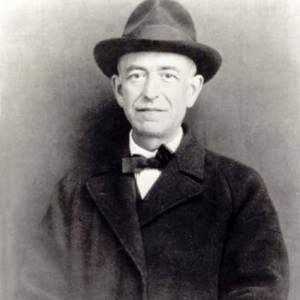 The final performance of the Sinfonietta’s Día de los Muertos concert returns to the time and setting of Golijov’s opera; early 20th Century Spain. El Sombrero de tres picos has its beginnings in a modest two act ballet by Manuel de Falla that premiered in Madrid in 1916. That performance was witnessed by Russian ballet impresario Sergei Diaghilev, who was so taken by the music that he commissioned Falla to score a full orchestral ballet from its themes. The resulting work had its premiere in London in 1919, with costumes and scenery by no less a figure than Pablo Picasso. Suite No. 2 consists of three dances from the ballet: The Neighbors Dance, the Miller’s Dance, and the Final Dance.
The final performance of the Sinfonietta’s Día de los Muertos concert returns to the time and setting of Golijov’s opera; early 20th Century Spain. El Sombrero de tres picos has its beginnings in a modest two act ballet by Manuel de Falla that premiered in Madrid in 1916. That performance was witnessed by Russian ballet impresario Sergei Diaghilev, who was so taken by the music that he commissioned Falla to score a full orchestral ballet from its themes. The resulting work had its premiere in London in 1919, with costumes and scenery by no less a figure than Pablo Picasso. Suite No. 2 consists of three dances from the ballet: The Neighbors Dance, the Miller’s Dance, and the Final Dance.
Like Golijov, Falla uses flamenco as a basis for much of the work. Golijov, in keeping with the theme of his opera, emphasized flamenco’s ominous, darker underpinnings. Falla’s ballet tells a tale as well, but one with an ultimately happy ending and the music is brighter and more celebratory because of it. There is, however, a further connection between the two works. Federico García Lorca was a friend of Falla and an accomplished pianist, part-time composer and something of a musicologist, especially when it came to flamenco. He worked with Manuel de Falla to stage a festival of the authentic form of cante jondo, or “deep song,” as the most substantial branch of flamenco is known. Thus, with this lively conclusion to the concert, we celebrate life, but we also remember the dead.
Classical Net has a succinct biography and appreciation of Manuel de Falla, including a survey of his major works.
The video is a performance of the Final Dance by the Orquesta Sinfónica del Estado de México.
ARTISTS
Mei-Ann Chen, Music Director and conductor
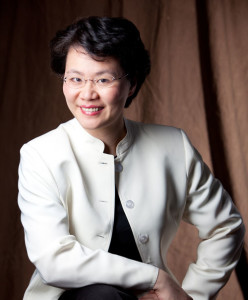 This season’s Día de los Muertos concert is the Sinfonietta’s fourth annual presentation inspired by the Mexican holiday. In previous years, the orchestra brought in a guest conductor, but in this, Mei-Ann Chen’s third season as Music Director, she decided to lead the celebration herself. In doing so, she brings the same aggressively adventurous approach to repertoire and collaboration that earned two awards from the League of American Orchestra in 2012: The Helen M. Thompson Award, recognizing her impact and potential for a significant national career, and another for the orchestra itself, a First Place Award for Adventurous Programming.
This season’s Día de los Muertos concert is the Sinfonietta’s fourth annual presentation inspired by the Mexican holiday. In previous years, the orchestra brought in a guest conductor, but in this, Mei-Ann Chen’s third season as Music Director, she decided to lead the celebration herself. In doing so, she brings the same aggressively adventurous approach to repertoire and collaboration that earned two awards from the League of American Orchestra in 2012: The Helen M. Thompson Award, recognizing her impact and potential for a significant national career, and another for the orchestra itself, a First Place Award for Adventurous Programming.
Chicago Tribune classical critic John von Rhein, in assessing her leadership, recently said this: “The city's most brazenly unconventional symphony orchestra is ever looking for ways to shake up the classical music experience in ways that demolish boundaries and bring in more diverse audiences.” In taking on this particular challenge, Mei-Ann Chen firmly connects her ambitious artistry to the Sinfonietta’s quarter-century heritage of diversity, inclusion and service to the community.
Mei-Ann Chen’s complete biography can be found here.
DePaul University Singers, chorus
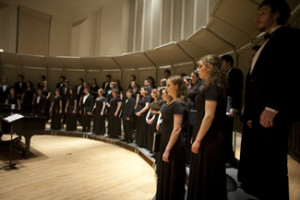 The Sinfonietta’s Día de los Muertos concert includes two very different works that require a vocal ensemble. The demands of the modern, flamenco and Arabic inflected sounds of Golijov’s Ainadamer and the deeply powerful intonations of Mozart’s Requiem require a command of both differing vernaculars and languages. Fortunately, Chicago is home to the DePaul University Singers.
The Sinfonietta’s Día de los Muertos concert includes two very different works that require a vocal ensemble. The demands of the modern, flamenco and Arabic inflected sounds of Golijov’s Ainadamer and the deeply powerful intonations of Mozart’s Requiem require a command of both differing vernaculars and languages. Fortunately, Chicago is home to the DePaul University Singers.
The Singers are the school’s most select choral ensemble, The 45-voice ensemble is dedicated to the performance of challenging choral literature of all historical periods in a variety of languages. Conducted by Steven Grives, the group performs frequently both on and off campus. The University Singers have been invited to perform at choral conventions, most recently the American Choral Directors Association Central Division Convention in 2010. Recent notable performances have included the Dvorak Te Deum, Bach Cantata #187, and Werner Jaegerhuber’s Messe folklorique haitienne. The University Singers have recorded two of their own CDs and also appear in Cedille Records’ disc of the music of George Flynn and earthsongs publishing’s “One World, Many Voices” series.
The video demonstrates the University Singers way with liturgical music (like the Requiem) on a performance of Cantate Domino, which translates to Sing to the Lord.
Elizabeth Norman, soprano
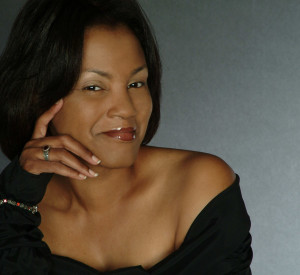 Elizabeth Norman has gained an international reputation as an accomplished interpreter of contemporary composers. She is a winner of The Metropolitan Opera National Finals, The Lynn Harvey and Bel Canto Competitions, The American Opera Society and the Union League Civic and Arts foundation Awards. She has performed concerts and oratorios around the world on some of the most well known stages and halls, including the Metropolitan Opera House, in New York City, the White House and the Kennedy Center in Washington D.C., the Chicago Symphony Center and the Musikverein in Vienna, Austria: as well as in Italy, Israel, and the African Countries of Madagascar, Mauritus, Kenya, Tanzania, and Rwanda for the United States Information Agency. She’s also sung with jazzman Wynton Marsalis.
Elizabeth Norman has gained an international reputation as an accomplished interpreter of contemporary composers. She is a winner of The Metropolitan Opera National Finals, The Lynn Harvey and Bel Canto Competitions, The American Opera Society and the Union League Civic and Arts foundation Awards. She has performed concerts and oratorios around the world on some of the most well known stages and halls, including the Metropolitan Opera House, in New York City, the White House and the Kennedy Center in Washington D.C., the Chicago Symphony Center and the Musikverein in Vienna, Austria: as well as in Italy, Israel, and the African Countries of Madagascar, Mauritus, Kenya, Tanzania, and Rwanda for the United States Information Agency. She’s also sung with jazzman Wynton Marsalis.
Fortunately for the Chicago Sinfonietta, Ms. Norman makes her home on the city’s South Side and is a member of the Apostolic Church of God, a congregation with ties to the Sinfonietta that date all the way back to the orchestra’s founding 27 years ago. We are very fortunate that she has graced our stage several times, both as an operatic soprano soloist and a member of the Apostolic Choir. She joins us at Día de los Muertos to sing Balada 1 from Osvaldo Golijov’s Ainadamer accompanied by members of the DePaul University Singers.
Along with two other sopranos, Ms. Norman performs in TreDiva, interpreting light opera as well as popular music.
The video is a gospelized TreDiva performance of Lee Ann Womack’s massive pop hit I Hope You Dance.
Adé Williams, violin
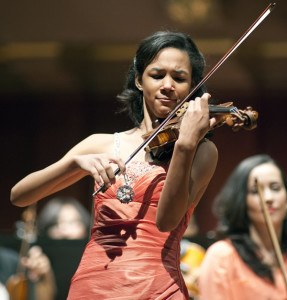 When Maestro Paul Freeman founded the Chicago Sinfonietta in 1987, one of his objectives was to make the orchestra an advocate for young and talented musicians from diverse backgrounds. Thus, it should not be considered a surprise when 15 year old Adé Williams takes the stage at Día de los Muertos as the featured soloist on Piazzolla’s Cuatro Estaciones. What may surprise you, though, is that this is not the first time Ms. Williams has graced the Sinfonietta stage. In fact, she made her orchestral debut with us in 2004. Do the math: Adé was a remarkable 6 years old at the time! The young Chicagoan has achieved much since then, up to and including winning the Junior Division First Place Laureate of the 2012 Annual Sphinx Competition. She is a Betsey and John Puth Fellow and a William Warfield Scholar at the Music Institute of Chicago’s Academy program for gifted pre-college musicians where she studies violin privately with artist faculty members Almita and Roland Vamos. Adé has performed across the U.S. as well as in England, Italy, Bermuda and Switzerland.
When Maestro Paul Freeman founded the Chicago Sinfonietta in 1987, one of his objectives was to make the orchestra an advocate for young and talented musicians from diverse backgrounds. Thus, it should not be considered a surprise when 15 year old Adé Williams takes the stage at Día de los Muertos as the featured soloist on Piazzolla’s Cuatro Estaciones. What may surprise you, though, is that this is not the first time Ms. Williams has graced the Sinfonietta stage. In fact, she made her orchestral debut with us in 2004. Do the math: Adé was a remarkable 6 years old at the time! The young Chicagoan has achieved much since then, up to and including winning the Junior Division First Place Laureate of the 2012 Annual Sphinx Competition. She is a Betsey and John Puth Fellow and a William Warfield Scholar at the Music Institute of Chicago’s Academy program for gifted pre-college musicians where she studies violin privately with artist faculty members Almita and Roland Vamos. Adé has performed across the U.S. as well as in England, Italy, Bermuda and Switzerland.
Along with two cousins, she also performs in a trio named SugarStrings that began at the Hyde Park Suzuki Institute, who’s Founder and Executive Director is Sinfonietta violinist Lucinda Ali Landing. From generation to generation, Dr. Freeman’s legacy is alive and well.
A more complete profile of Adé and her many accomplishments can be found at the Sphinx Organization website.
To view and hear her Sphinx Competition award-winning performance, check out the video.
Redmoon Theater, costume design
Mozart’s Requiem is powerful enough on its own, but for Día de los Muertos, the Sinfonietta connects this deeply spiritual music to the Mexican holiday through the theatrical spectacle of costumes designed by Redmoon Theater. Founded in 1990, the Pilsen-based company transforms streets, stages, and architectural landmarks, bridging international, economic, cultural and generational boundaries with a unique brand of spectacle: a public art form that is equal parts pageantry, gadgetry, puppetry, robust physical performance and visual art. Redmoon seeks to transform the experience of our urban landscape through ephemeral events that disrupt everyday life and provide opportunities for public engagement, community building and recognition of the possibility of change.
The iconic skeletal images of that many of us picture when we think of Día de los Muertos are the creation of the 19th century Mexican artist and illustrator José Guadalupe Posada. His prints have influenced generations of Mexican artists and continue to do so today. The Redmoon designed masks and costumes that will be worn onstage bear a striking similarity to Posada’s images and are no doubt influenced by them as well.
Redmoon has a uniquely designed and fun to navigate website.
You can glimpse some of Redmoon’s skeletal costumes in this video as well as get some idea of their idea of spectacle.
Research and copywriting by Don Macica.
Don is a marketing consultant to the performing arts community and a contributing writer to several online publications including Chicagomusic.org and Arteyvidachicago.com. When not traveling, he lives a stone's throw from Lake Michigan in Chicago’s Rogers Park neighborhood. He is the author of Border Radio, a blog about music, migration and cultural exchange.
